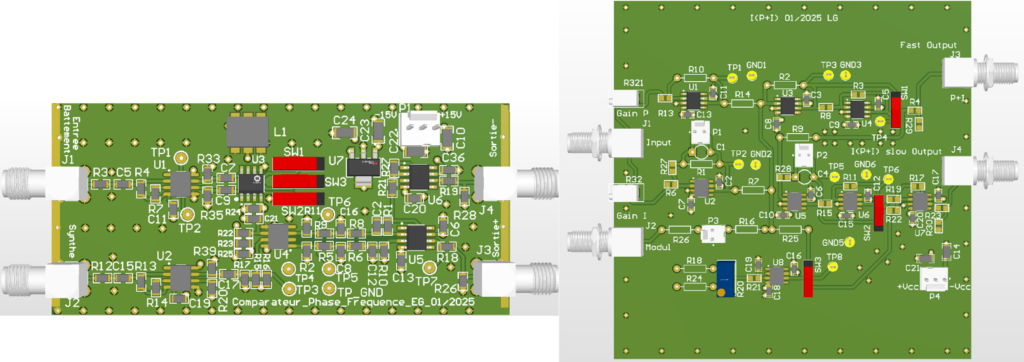SI-referenced lasers
Maxime Leuliet, Bérengère Argence, Laurent Hilico
A fceo-free frequency comb at 1.55 $\mu$m with extensions to 1.9 $\mu$m and 1.1 $\mu$m is optically locked to the REFIMEVE ultrastable signal. It is used to phase-lock all the laser involved in the experiments, and get SI-referenced laser frequencies. All the locks use the same Phase/Frequency comparator and proportional-integral (PI) developped by the LKB electronic work-shop.
Collaborations Laboratoire de physique des lasers (USPN-LPL)
Funding ANR, Comb’IDF, First-TF, REFIMEVE
 Left: Phase frequency comparator with 2, 4, 8 dividor. Right: Proportional-Integral corrector.
Left: Phase frequency comparator with 2, 4, 8 dividor. Right: Proportional-Integral corrector.